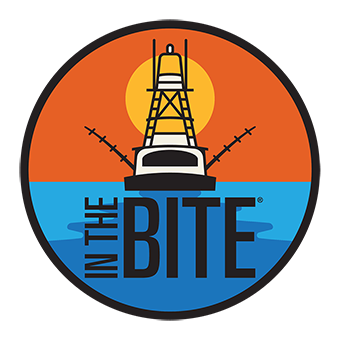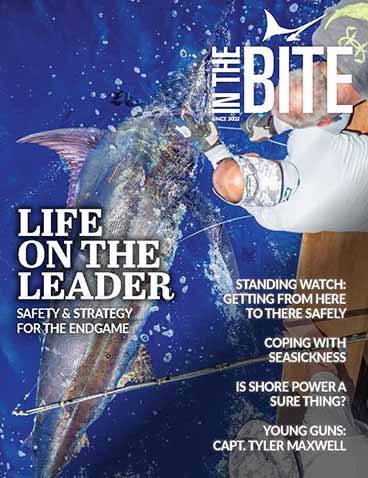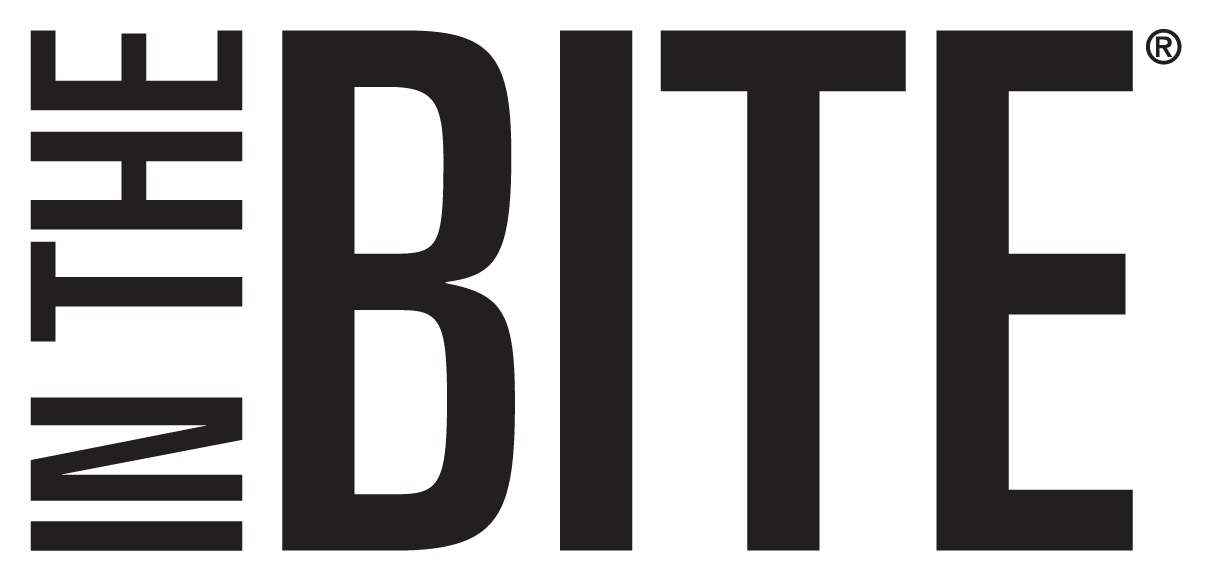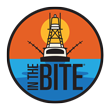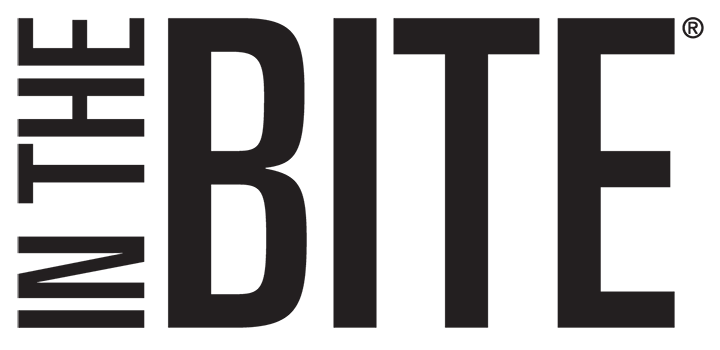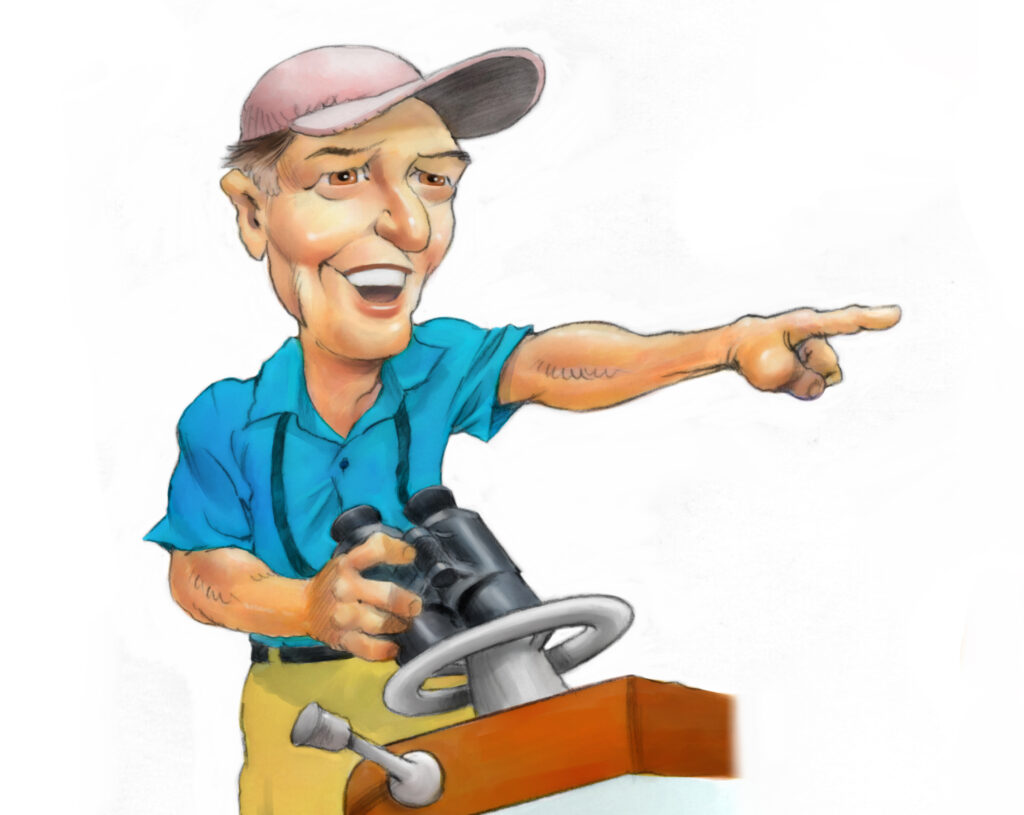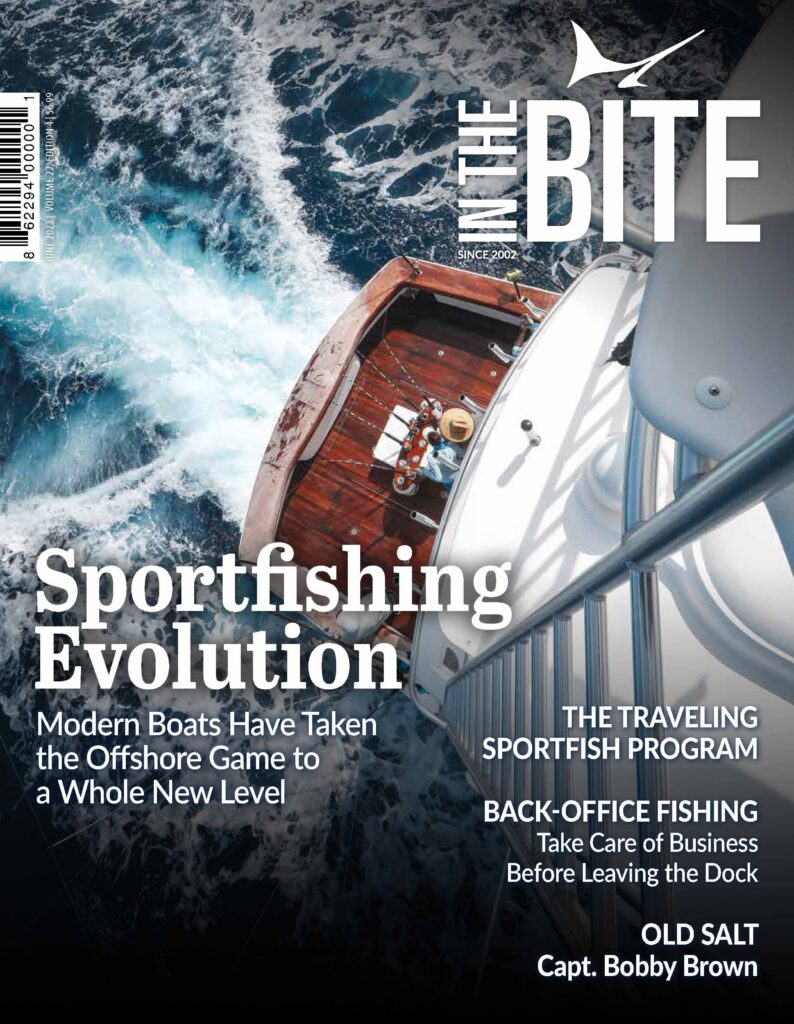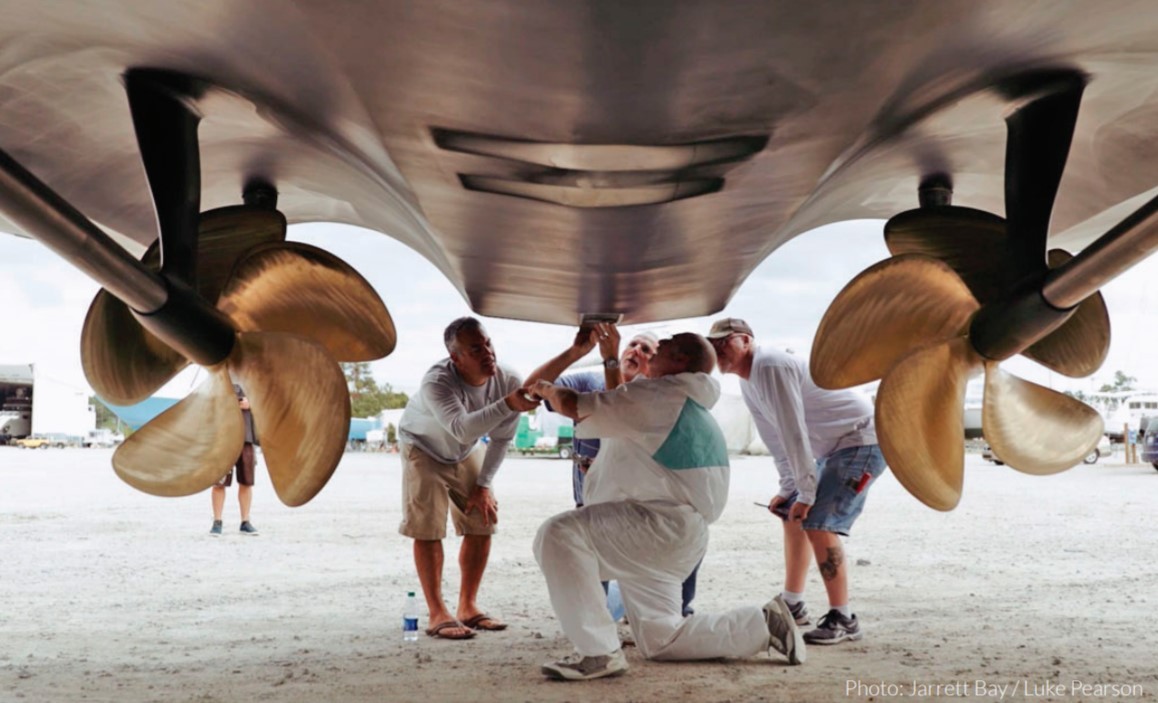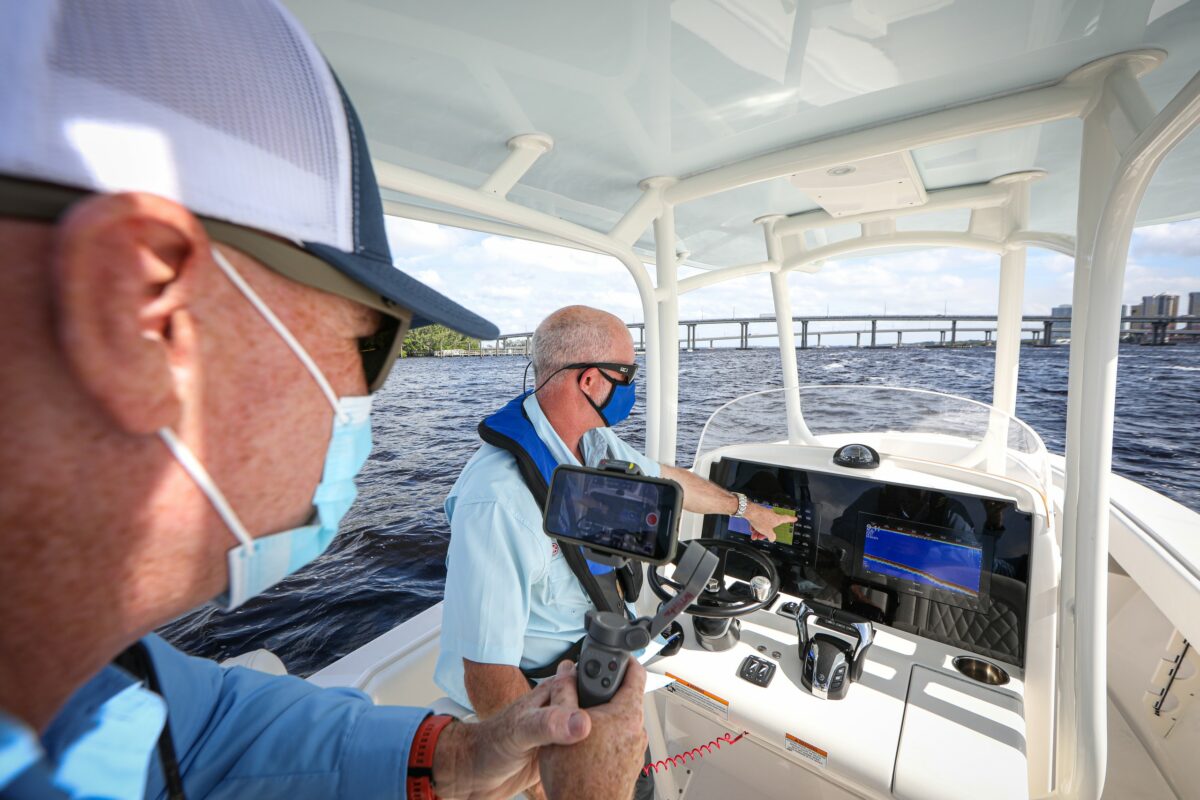Table of Contents
Introduction to Steering Systems in Sportfishing Boats
It’s often an emergency that prompts us to look at boat steering systems. While routine maintenance of modern steering systems is usually simple, an at sea steering issue can quickly and easily result in rudderless steering and an oily bilge! While I have witnessed many captains maneuver a boat with amazing skill using just the engines, having a properly operating steering system is prudent and allows safe operation in all conditions.
What type of steering system do you have? While most sportfish crew would answer hydraulic, there are many variables today that differentiate the design, components and operation of boat steering systems. Learning about your boat’s system can assist when it comes time for maintenance, ordering repair parts and performing bleeding (more about this later).
Boat Steering Systems of Old – And their Modern Counterparts
Some readers may remember the cable and pulley steering systems on sportfish boats of the past. This system was complete with cables and pulleys neatly hidden under the headliner and jackshafts, with more pulleys and cables, transferring the steering power to the rudders. Most of these mechanical systems have gone the way of the dinosaur – replaced with a variety of hydraulic solutions on sportfish boats. Hydraulic systems provide better command of the vessel’s directional stability and result in less fatigue on the captain.
At its most basic level, a hydraulic steering system consists of a helm pump, steering cylinder, rudder(s) and interconnecting hoses. The helm pump is a hydraulic pump attached under the helm wheel. When the helm wheel is turned, the helm pump pushes hydraulic oil through the hydraulic fluid lines and into the cylinder that pushes the internal piston one direction or the other, depending which way you turn the helm wheel. While most steering systems on sportfish boats are more complex with additional components, the operating principal is the same.
Steering systems are designed with many considerations in mind. These factors include: the size, weight and speed of the vessel, how the vessel is used, and the design and location of the rudder.
Physics and fluid mechanics provide the basis for the design of these systems. Luckily, most marine steering companies and boat manufacturers will perform the necessary calculations to recommend various steering solutions for your specific vessels requirements. Thankfully, you can leave your calculators and physics workbooks at home.
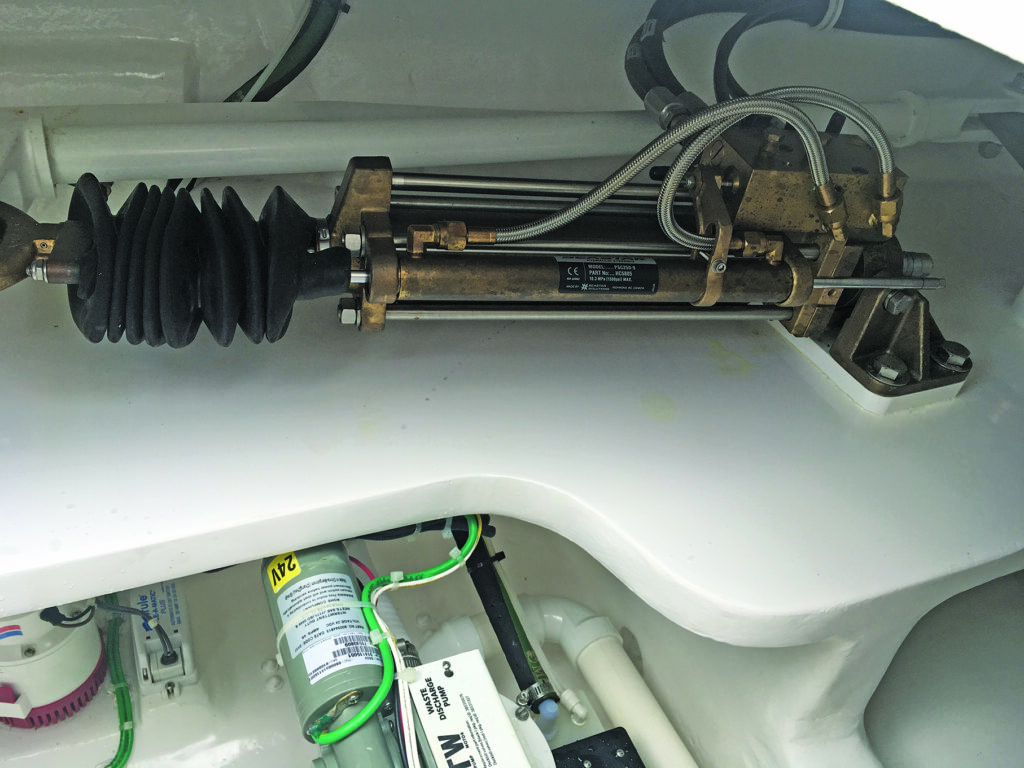
Steering System Maintenance
No matter what steering system your boat has, there are two common components to all systems: the hydraulic oil and cylinders. The most critical part of any hydraulic system is clean hydraulic oil. Many times, we hear about the need to bleed a steering system. The need is often caused by a leak in the system that let air or water into the system, while letting oil out.
A boat’s hydraulic steering is a closed system that operates on high pressures of 1000 PSI or more. At these pressures, even a slight leak from a hose or seal will quickly cause oil to leak out. This can possibly disable the steering system.
Each steering system manufacturer offers specific procedures for filling and bleeding of their systems. The basic premise for bleeding is to circulate clean hydraulic oil through the system while bleeding the air out until a steady stream of air and contaminant free oil is observed. EPS systems often have a maintenance mode that may be accessed through the steering control display. Maintenance mode will walk you through the procedure for bleeding the system.
Varieties of Steering Systems in Sportfishing Boats – Description and Application
Power Steering
Cars, trucks and off-road machinery all have power steering, so why isn’t power steering as common on the sportfish market? Marine steering system manufacturers have made it easy to have safe and reliable marine power steering systems. Such systems provide precise steering from the helm, reducing operator fatigue and increasing steering accuracy at both low and high speeds.
The most common power steering system uses an engine-driven hydraulic pump to provide high pressure hydraulic oil for the power circuit of the steering system. A marine power steering system adds a second hydraulic cylinder and second hydraulic oil circuit from the engine-driven pump. The high-pressure power circuit is actuated by the manual system from the helm wheel. This is accomplished using a small servo cylinder/valve mounted on or near the steering cylinder. This cylinder/valve directs the power steering oil to the power cylinder when the helm wheel is turned. The nice feature of this system is that if the power steering circuit fails, the traditional manual steering at the helm can still function – though more force is often needed with more wheel turns lock-to-lock.
Electric Power Steering Pumps
This type of hydraulic steering operates similarly to the engine-driven power steering system, but without the engine driven pump. The hydraulic power comes from a standalone electric motor, usually supplied with DC power. These systems vary in design. While their primary application lies with large center console boats powered by multiple outboards, electric power steering pumps are becoming more popular in sportfish boats.
There are two design styles of electric power steering systems – one with a constantly running electric hydraulic pump and the other with an on-demand electric motor pump. While the end result is similar, the feel of the system and response time is slightly different. Most of the large sportfish boats that use electric power steering include the constantly running engine, while the on-demand pumps system is often used in center console boats.
The constantly running pump system supplies high pressure hydraulic steering oil to the steering system continuously while the steering system is powered on. Contrarily, the demand system pump is always off, until the captain begins to turn the helm wheel, which triggers a sensor in the hydraulic system that turns on the pumps motor. The on-demand system uses less electricity and helps reduce the steering effort as compared to manual steering, though the feel and reaction time is much different that and constant running pump.
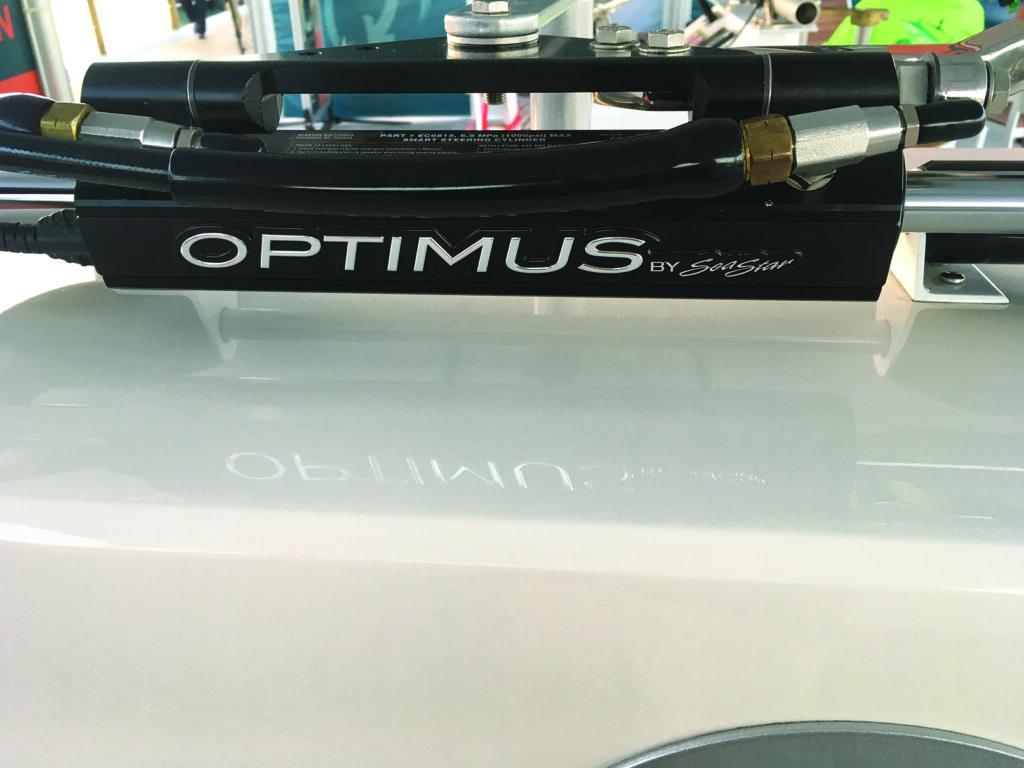
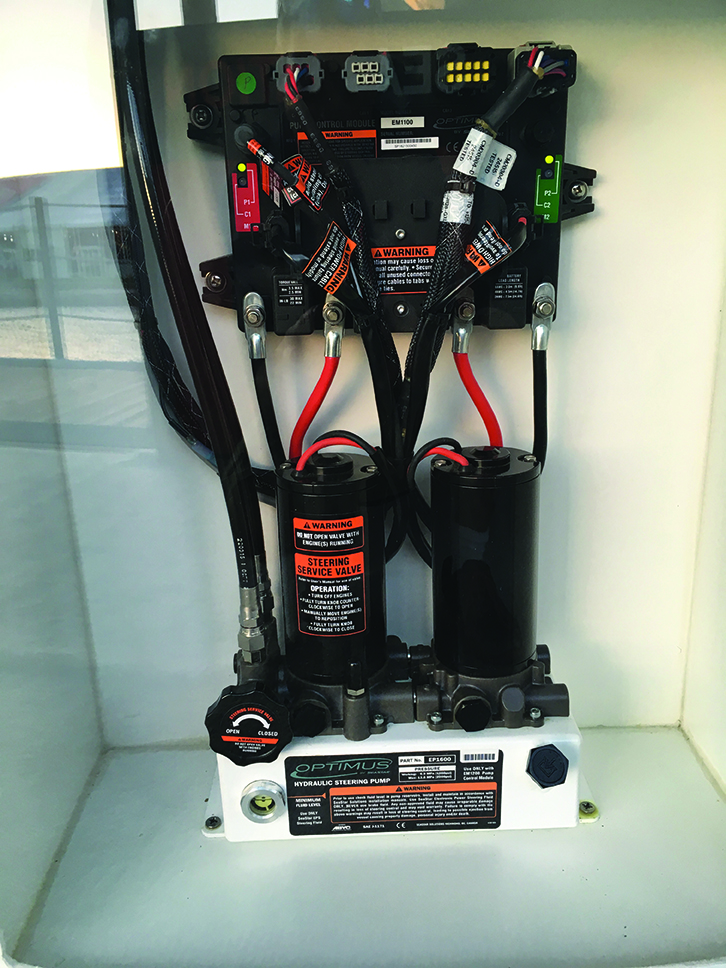
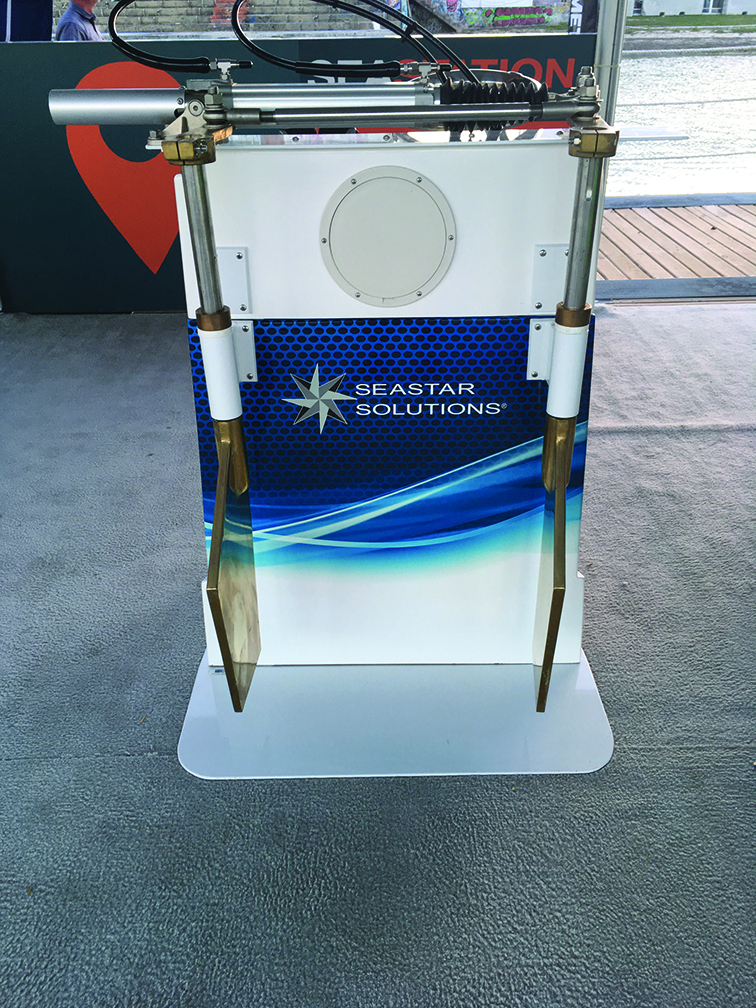
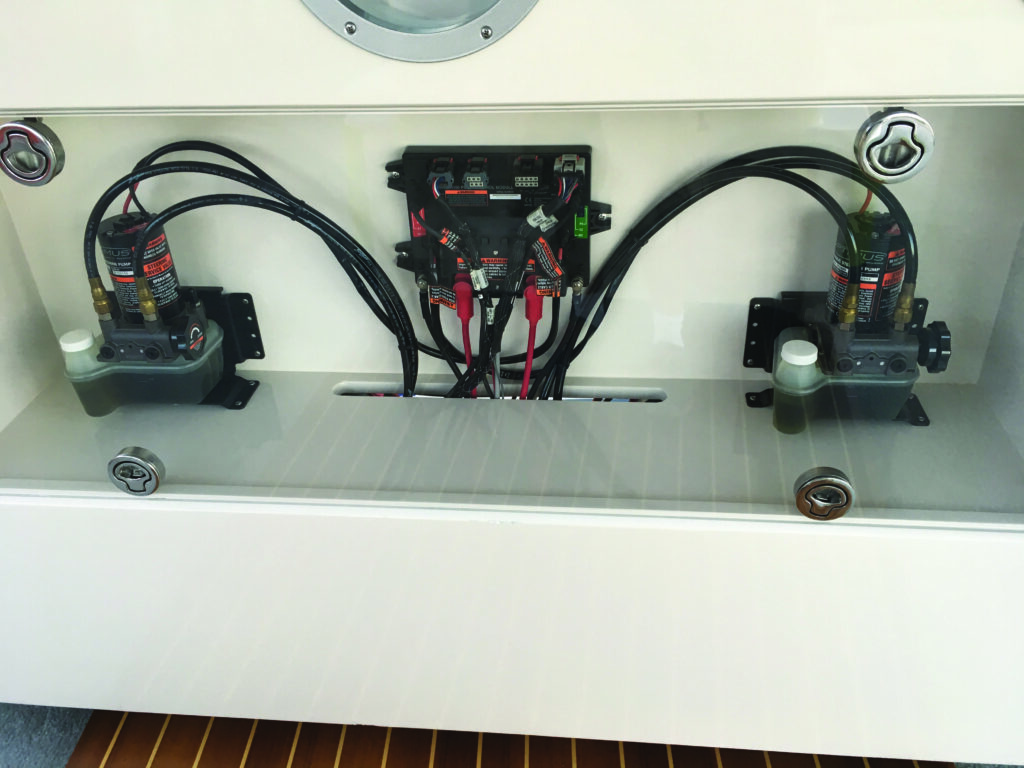
Steer by Wire – Electronic Power Steering (EPS)
Electronic controls are not just for the engines anymore. Today’s electronic steering systems operate in a similar fashion to the electronic engine controls that run the vessel’s engines and marine gear. These steering systems are often called Electronic Power Steering or EPS.
In an EPS system, the helm wheel is connected to an electronic sensor instead of a hydraulic helm pump. Digital data signals are sent along wires to the steering system below deck, usually consisting of a computer processor, electric pump(s) and steering cylinder(s) that are connected to the rudders.
The most popular form of EPS is the Seastar Optimus system for outboards. This system consists of independent pumps and cylinders for each outboard engine. As you might imagine, a computer system controls the coordination of each outboard engine relative to the others. When the captain turns the helm wheel, the signals travel into the computer and then to each electric pump and engine cylinder.
This set up enables some amazing features that are unavailable with any other steering systems. An EPS system can be programmed to decrease the number of helm wheel turns lock-to-lock for ease of low speed maneuverability. An EPS can also increase the lock-to-lock turns at high speed to improve stability, tracking and course keeping. The steering angles can also be customized based on the boat’s performance and speed curves.
Another feature of EPS systems is that the large hydraulic steering lines are replaced with small wires connected to each helm wheel. This makes adding a second or third steering station a much simpler task – as compared to routing bulky hydraulic lines. The new EPS systems are designed for both new construction and retrofit projects to replace traditional steering systems.
While a joystick was once reserved for steering Pac Man, the EPS steering system enables joystick control of outboard vessels at low speeds. Joystick control is possible in conjunction with digital fly by wire engine controls. This set up allows the joystick control to change the engine rpm, engine gear direction and engine steering angle. These joysticks steering for outboards are similar to the vectored thrust systems used in the Volvo Penta and ZF pod systems on sportfish boats.
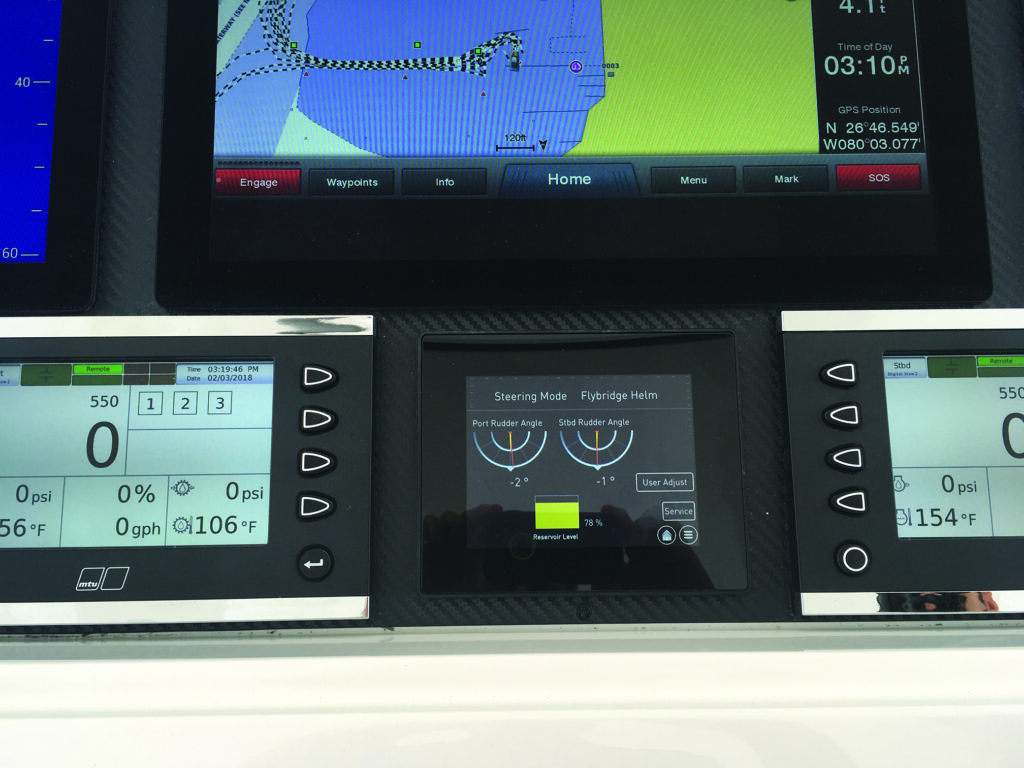
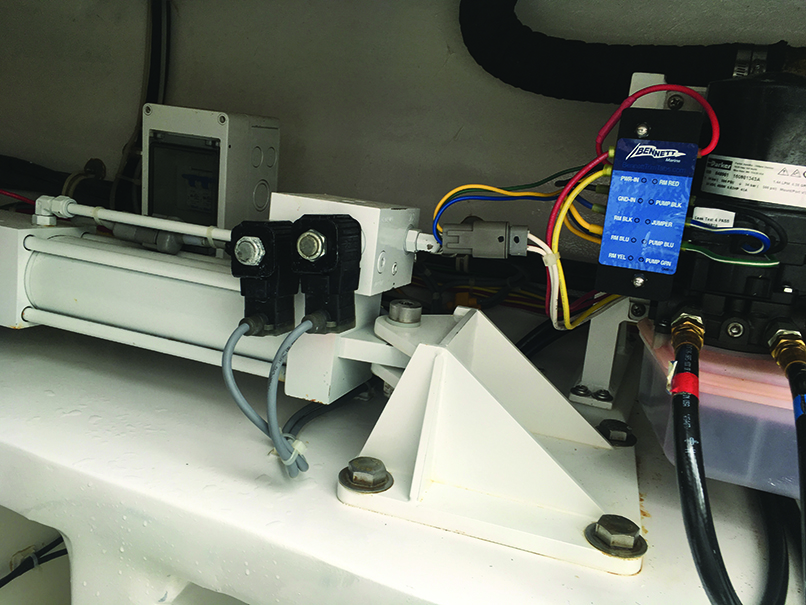
Not just for outboards
The Seastar Optimus EPS system is now also available for inboard boats up to 70’. The Optimus system operates in similar fashion as other electric inboard power steering systems, but is also available in more advanced configurations, depending on the application. In its simplest form, the electronic power steering system uses an electronic helm, single power steering pump and single cylinder at the rudders. In a more advanced system, there can be one pump and cylinder for each rudder without a tie bar. This allows the rudders to operate independently or in unison, depending on the pre-programmed operating parameters.
Viking Yachts knew an EPS system like this would have many advantages for sportfish boats and designed their own system years ago. The steer-by-wire Viking Independent Proportional Electro-Hydraulic Rudder system is referred to as the VIPER steering system. The VIPER’s rudders are individually controlled with one steering cylinder per rudder. When the helm wheel is turned, an electric signal is sent to a controller whose software dictates the optimum position for each rudder.
Viking can adjust the offset or rudder toe and the number of turns lock to lock by altering the software programming. The system can also be programmed with different parameters based on the vessel’s speed. The Viper system has its own graphic display, showing each rudder position and other steering information.
Conclusion
Whether cruising, docking, fishing or backing down, advancements in steering systems have contributed to the ease and reliability of operating a sportfish boat. No matter how advanced the system, steering still relies on traditional aspects such as rudder size and shape, properly sized hydraulic cylinders, helm pump, hoses and other components. A regular visual inspection of your steering system components will help you to learn what you have and determine if and when maintenance is needed.
Autopilots
Most autopilot manufacturers offer a system for boats with EPS systems. These autopilot systems are similar to a traditional autopilot system, except for one component – the hydraulic pump. In an EPS system, the autopilot manufacturers substitute a gateway or electronic module for the hydraulic pump. This gateway electronically connects the autopilot to the vessels steering system, allowing the autopilot to send steering commands to the EPS computer in a similar fashion that the electronic helm wheel would send steering input signals. This autopilot gateway is specific for each type/brand of steering system.
Boats with traditional hydraulic steering use an autopilot system that incorporates a standalone autopilot hydraulic pump connected to the steering system as an additional station. There are a variety of hydraulic pumps available and are selected by capacity based on the volume of the steering cylinders. Don’t guess or select the pump by price as an undersized or oversized autopilot pump can cause unacceptable autopilot performance.
If your boat has a constant running power steering system, you may be able to forgo the need for the traditional autopilot pump. Some autopilots can connect to the existing directional solenoid valves in the power steering system.
A technical note – In regards to the hydraulic portion of the autopilot system the National Marine Electronics Association (NMEA) installation standard 0400, indicates that “Isolation valves shall be installed in the hydraulic lines connected to all ports entering the autopilot pump.” This allows for isolation, service or replacement of the autopilot hydraulic pump without disturbing the rest of the vessel’s hydraulic steering system. This practice is often overlooked in many boat steering systems.
Autopilots have advanced a long way in just a few years. Most components are shrinking in size and heading sensors are becoming solid state, multi-axis sensors and even using GPS as a basis for heading in place of a fluxgate compass. The advancement has also allowed autopilots to perform better and allow for new interesting features, such as Furuno’s Sabiki mode.
Steve is a seasoned professional with over 20 years of experience in the sportfishing industry. As the owner of Steve’s Marine Service, Inc., he has played a pivotal role in the sportfishing circuit, operating in prominent locations such as Ocean City, Maryland, and South Florida.
Don’t Forget to Check Out Our Sportfishing Job Board! Did You Know? It’s the perfect platform for seeking skilled captains and mates. Whether you’re on the hunt for your dream team or looking to join one, your next big adventure begins here. Explore the opportunities now! Click Here
Dive Deeper into the World of Sportfishing
You’ve just experienced a taste of the exceptional content featured in the pages of InTheBite Sportfishing Magazine. If you found this engaging, you’re in for a treat with our full publication. Whether you prefer the tactile experience of print or the convenience of digital or both we have a special offer for you.
Unlock Exclusive Savings: Enjoy 50% Off Your Subscription!
Are you ready to explore the thrilling world of sportfishing from the comfort of your home? Subscribe now and embark on a journey filled with captivating stories, expert insights, and insider tips. Choose between our digital or print edition and secure an incredible 50% discount on your subscription.
Subscribe today and get ready for an adventure like no other. Click here to subscribe and elevate your sportfishing experience with InTheBite Sportfishing Magazine.
